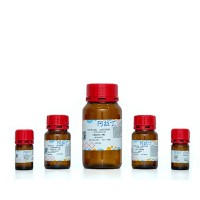Combination of Cell Culture Assays and Knockout Mouse Analyses for the Study of Opioid Partial Agonism
互联网
259
Nonselective opioid partial agonists, such as buprenorphine, butorphanol, and pentazocine, have been widely used as analgesics
and for anti-addiction therapy. However, the precise molecular mechanisms underlying the therapeutic and rewarding effects
of these drugs have not been clearly delineated. Recent success in developing μ-opioid receptor knockout (MOP-KO) mice has
elucidated the molecular mechanisms underlying the effects of morphine and other opioids. We have revealed the in vivo roles
of MOPs in the effects of opioid partial agonists by using MOP-KO mice for behavioral tests (e.g., several kinds of antinociceptive
tests for analgesic effects, conditioned place preference test for dependence). The combination of the cell culture assays
using cDNA for μ, δ, and κ opioid receptors and the behavioral tests using MOP-KO mice has provided novel theories on the
molecular mechanisms underlying the effects of opioid ligands, especially opioid partial agonists.









